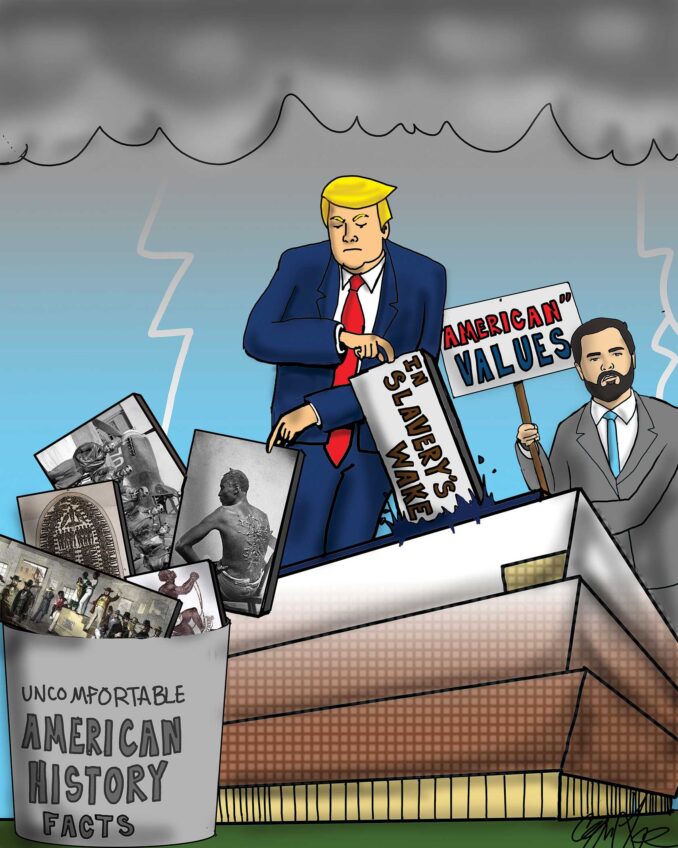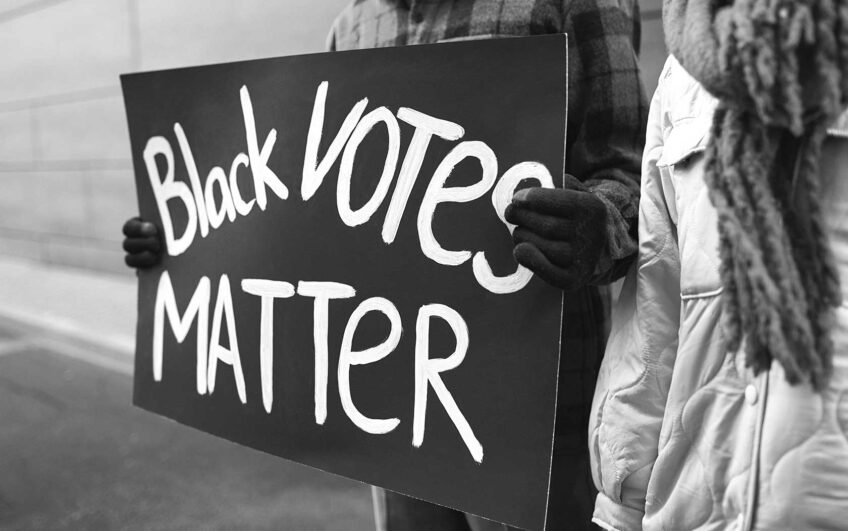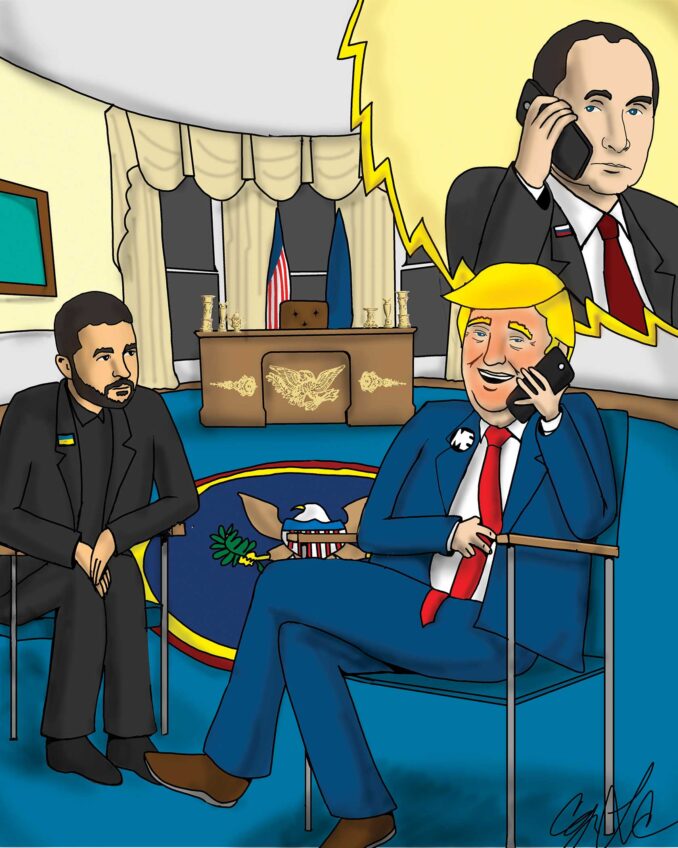When President Biden steps to the podium to address a joint session of Congress in late March or early April, it will mark the longest runway to the big speech by a new president in modern history.
In suggesting how Biden should approach the opportunity, I’ll retell a personal story:
In the security line at the Miami International Airport the day after Election Day in November, I noticed two men glaring at me. They were big; they were hairy; they wore denim. They were white Trump soldiers.
Their glares sharpened.
I inventoried myself for a faux pas. None that I could see. I wasn’t donning a gold Rolex or a Celtics jersey. Then it hit me. I was wearing a Biden-Harris mask.
Vote tallies were still coming in, Biden’s lead swelling. I’d deployed to the Sunshine State donning the hat of election attorney, sniffing for a recount rivaling the 37-day epic in 2000. Instead, Trump overperformed in Miami-Dade and Broward Counties on his way to a 375,000-vote tsunami.
Calmly, I traded my political mask for the generic N95 in my pocket. It wasn’t a surrender. It was a gesture.
The men looked flummoxed. Their fists unclenched. Their muscles relaxed.
“You with Trump?” I asked. “We’re squished too close on a plane for politics.”
As we boarded the flight and sat across the aisle, I probed deeper.
Favorite president?
A burst of sincere reflection: “Bill Clinton.”
Top issue?
“My guns. That’s number one.”
And Biden?
“Biden’s a front. She’s twirling the power strings.” Meaning: Harris.
Why Trump?
“At least he lies to your face.”
After the plane landed in Georgia, we parted ways.
I savored the encounter as a small breakthrough in communication with the other side.
Fast-forward two months: I’m in my office, eyes glued to the iMac to learn if would-be Sens. Rev. Raphael Warnock and Jon Ossoff had flipped Georgia blue. Annoyingly, the newscast kept cutting to this “Stop the Steal” delusion near the White House. Soon the screen filled with calming imagery of lawmakers certifying Biden’s victory, the penultimate step in the peaceful transfer of power.
This Democratic double-feature, I thought, would punctuate the greatest election ever; heck, even the most racially and gender diverse Republican House incoming class was historic and remarkable.
Squinted at just so, partisans of every stripe could rejoice.
The festivities were interrupted by a bum-rush on constitutional democracy that was as incomprehensible as seeing the planes disappear into the World Trade Center towers. Jeans-wearing foot soldiers brushed aside paltry resistance and overran the venerated exterior edifice.
These were mostly rural-looking white guys, rampaging for an hour. Even the stray women and people of color shared the same bitter face.
“They’re — The guys from the airport?”
I never forget a face. I was sure. Apparently, I hadn’t influenced their thinking.
They didn’t surge forward. But in the mayhem and disjointed footage, proximity was damning, with furious citizens stampeding past a barricade; a fleeting glimpse on the scaffold before joining the ransacking mob entering the building.
“So long.”
Now it was forever the worst election, too.
As Biden seeks to swell public confidence, he would do well to clarify how he plans to govern. The mandate bestowed upon him by over 81 million voters, he could explain, is to improve people’s lives by any lawful means necessary. He could lay out a credible approach to legislating with five layers:
1. Present his policies.
2. Test the soundness of his policies with voters.
3. Practice procedural bipartisanship by meeting with his Republican counterparts.
4. Strive for substantive bipartisanship with his Republican peers.
5. If that fails, stick with the best of step 2.
Relying on this framework can ensure that Biden’s campaign promises and governing style are congruent. It can increase public pressure on Republicans to deliver Biden the 10 of their votes required to pass urgent legislation in a tied U.S. Senate.
This bipartisanship with a Biden twist would force truculent Republicans to triangulate with flexible Republicans and a Democratic Party that reflects public opinion.
As the Biden presidency crosses the 60-day marker, it’s still establishing a governing rhythm. Normally, a new president enjoys successive chances to validate and motivate in the form of the Jan. 20 inaugural address followed by a February address to a joint session of Congress. Bush, Clinton, Bush II, Obama and Trump all spoke between Feb. 9–28.
But this year, a combination of impeachment, security concerns and the pandemic will delay the Congressional event until late March or early April. In the interlude, Democrats speedily delivered the fifth round of Covid relief. Yet the State of the Union is a precious resource, the only chance to speak to Congress with the American people watching.
While the 2020 election spilled into 2021 in extraordinary ways, the violence directed at our core democratic practice does have recent precedence.
Nearly 10 years before Jan. 6, on Jan. 8, 2011, an Arizona man opened fire on a “Congress on Your Corner” gathering featuring Rep. Gabrielle Giffords and her staff offering constituent services in a supermarket parking lot. In all, 19 people were wounded and six died, including a 9-year-old girl. The senseless slaughter in Tucson inspired an idea for members of Congress to sit together regardless of party at that year’s State of the Union Address for the first time in a century.
Biden should renew this gesture while teaching how it was insufficient to avert our vexing uncivil war.
So what will reduce the dysfunction?
Achieving the daunting step four in our playbook: conjuring assent from 10 Republican senators on infrastructure, unity and trade reform.
In a nutshell, if Biden can call out racism and champion a pluralistic mindset where coexistence replaces domination anxiety, then a regenerated America can rise from the ruins of Trumperica.
Beginning in the 2016 New Hampshire presidential primary, Ed Burley spent extensive time on the campaign trail interviewing voters. An attorney, political advisor and entrepreneur, he is writing a book about the experience.






